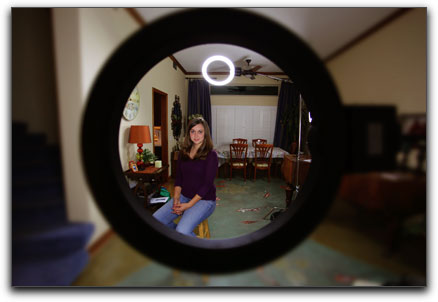
June 7, 2010
The Stellar Lighting Diva Ring Light
By Dan Brockett
If your background is in still photography, videography or filmmaking, you have undoubtedly seen and taken notice of the results from using ring lights. From Hype Williams' visually groundbreaking late '90s music video work to high fashion, beauty and glamour photography, the ring light is the weapon of choice for image-makers who want to show faces in the most flattering light possible. The ring light gives the image a distinctly clean, soft and modern look.
What exactly is a ring light? Simply put, a ring light is a circular lighting array, most commonly LED or fluorescent, that surrounds the lens of the camera. While mounting a key light to the lens sounds like an obvious location, placing the light source directly on-axis with the lens also accomplishes a couple of important effects. The main result is a light source that is quite flat because it is generated on an identical axis to the camera's lens. The benefit of this sort of flat, soft lighting is the elimination of almost all skin imperfections, makeup colors pop and the face ends up having a fresh, clean look. A secondary benefit of the ring light is that the catch lights in the eyes of the subject, the small reflections that give the eyes that "sparkle", are enhanced to give a distinct, stylized look to the image.
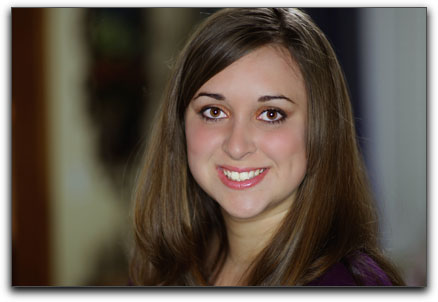
The Stellar Lighting Diva Ring Light is a new product that breaks down the cost barrier of adding a fairly large and soft ring light to your lighting package. Currently retailing for the heretofore unheard of introductory price of $149.00 at DVcreators http://www.dvcreators.net/diva-photovideo/ with replacement tubes available for a mere $26.00, the Diva Ring Light seems to be poised to allow the ever expanding audience of DSLR and prosumer video camera users to obtain the unique ring light signature look. Until now, a ring light has been out of reach for many users who could not afford to purchase or rent one or construct one. While you could build your own ring light, between researching the parts you will use, locating and buying the parts, prepping and assembling the light and testing it, unless your time is worth very little, you won't be able to create a ring light for less than you can buy this one for. Because the ring light is a somewhat specialized piece of equipment, the result is a relatively high retail cost. Popular brands of LED and fluorescent ring light systems typically retail for thousands of dollars.
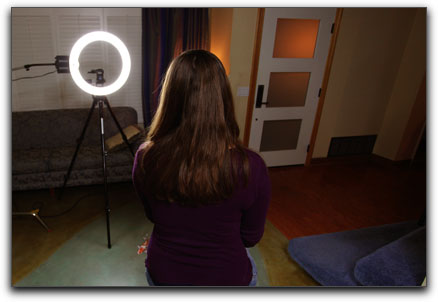
Many ring lights on the market are only six or eight inches in diameter, resulting in a smaller light source, making the quality of the light harder than a larger fixture would provide. Larger diameter ring lights have typically cost several thousand dollars. For such a low cost, just how well does the Diva Ring Light work? There has to be a catch, right? Guy Cochran of DVcreators sent me three of the new Diva Ring Lights in order to see in how many different ways I could utilize them.
The Diva Ring Light features an 18" diameter circular aluminum body that is painted flat back on the outside of the ring and with reflective matte white enamel paint on the interior of the ring.
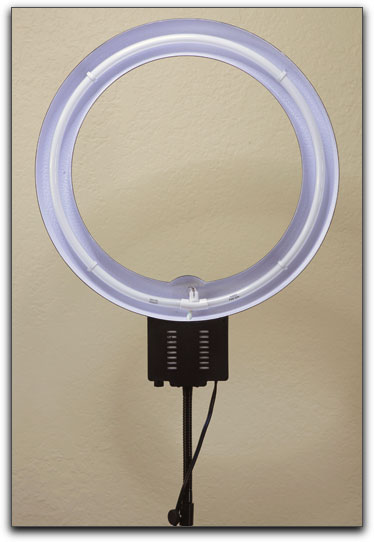
A circular, 5400k fluorescent tube rated at 65 watts is affixed to the fixture by four white metal strips, suspending the tube at the optimal distance of about a half inch above the body of the fixture.
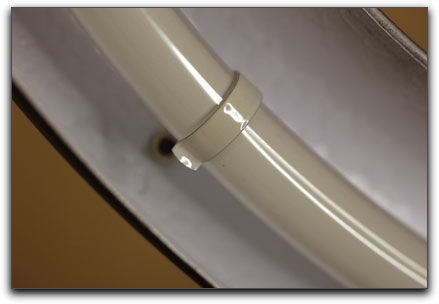
The fluorescent tube terminates into a plastic pin that runs down and out of a small hole in the aluminum tray.
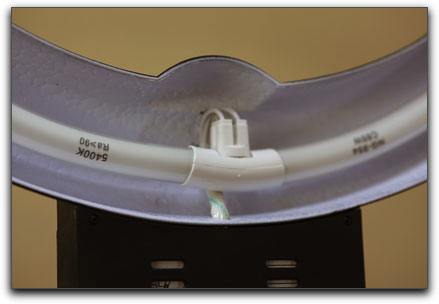
The tray is affixed to a rectangular ventilated metal box, which contains the ballast for the light and all of the electronics.
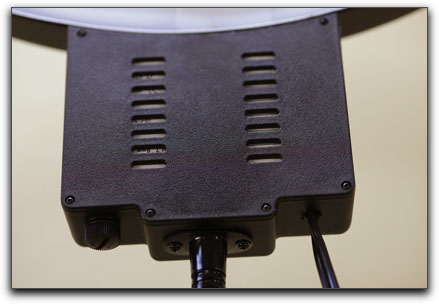
The sole control on the light is a small on-off switch.
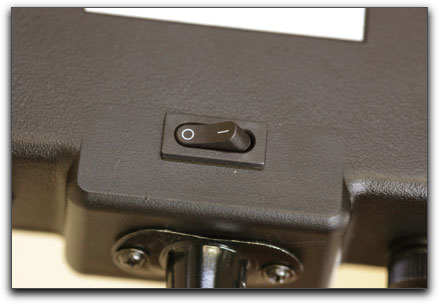
A six-foot AC power cord runs out of the bottom of the ballast box. The opposite side of the ballast box features a small, black plastic screw-in fuse inlet with user replaceable fuses.
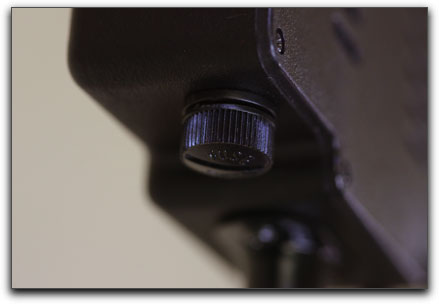
The light came packed with an extra fuse and an extra set of mounting screws for the flexible arm. The Diva Ring Light was provided with a standard 5/8" female adapter that is affixed to the bottom of the ballast, allowing the light to be easily attached to a standard 5/8" spud commonly found on light stands or for the light be affixed to the end of a standard 40" arm, found on most C-Stands.
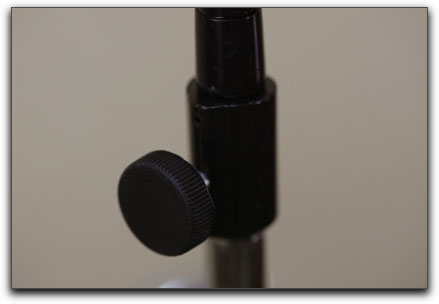
Before trying to tackle how to best utilize three ring lights in a setup, I first decided to put a single light through its paces. After positioning my camera, I rigged the Diva up to the end the grip arm on a 40" C-stand. This allowed me to position the Diva light wherever I needed to put it. I placed the light and camera approximately 6' from my subject. I shot still images using a Canon 5D MKII, one of the most popular DSLRs.
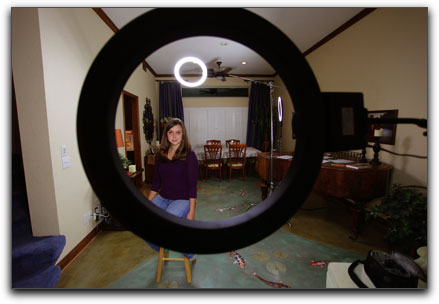
The Diva Ring Light is rated at 65 watts of output but keep in mind, 65 watts of fluorescent output, because fluorescent lights are more efficient than tungsten, is equal to about 250 to 300 watts of tungsten output. Another factor to consider in distances from light to subject are that the Diva does not have a dimmer function as some fluorescent fixtures have so the only way to regulate the output of the Diva is by changing the distance from the subject. You cannot easily put diffusion in front of a ring light without changing the specularity, directionality and the ring light effect.
Since I had three of the Diva Ring Lights to play with, I decided to try using all three in a traditional interview lighting setup.
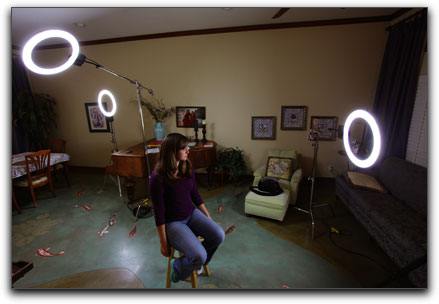
Normally, ring lights are used only on-axis with the camera, but I discovered that it all depends on how you view the Diva Ring Light. If you view the Diva as a soft, fluorescent light source, and not as only a ring light, what can be accomplished in a typical interview lighting setup? Typically, to light an interview, I would use a key source, a fill source and a hair or rim light to separate the subject from the background. This image is lit with only a single Diva Ring Light. Note that while the subject is flatly lit, the image still looks a bit "incomplete".
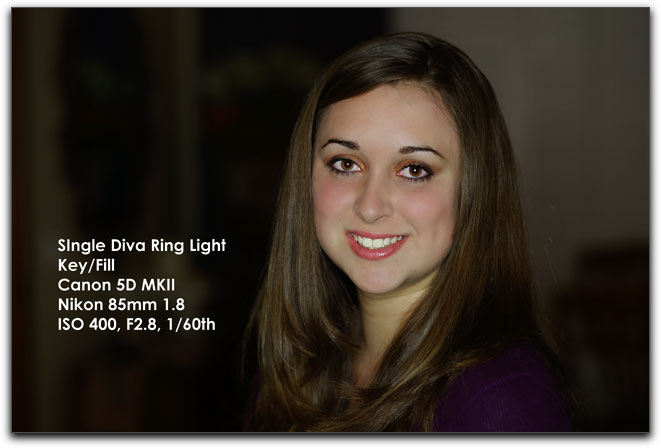
Here is sample lit with two of the ring lights, one as a key/fill source from the front of the subject and a second ring light, mounted on a 40" C-stand arm raised up above and about four feet behind the subject.
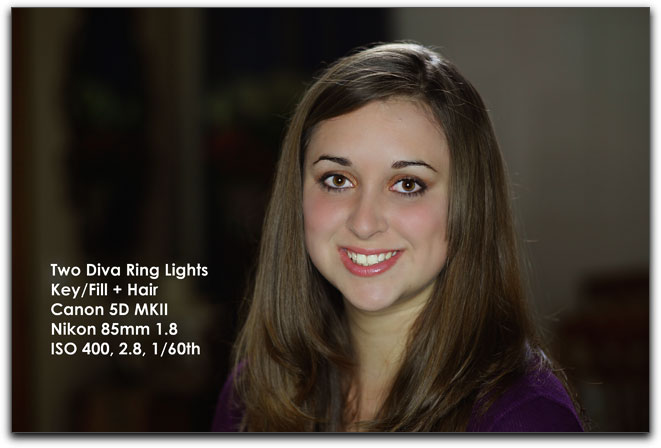
The next image shows the same setup with the addition of the third ring light to light up the background of the room.
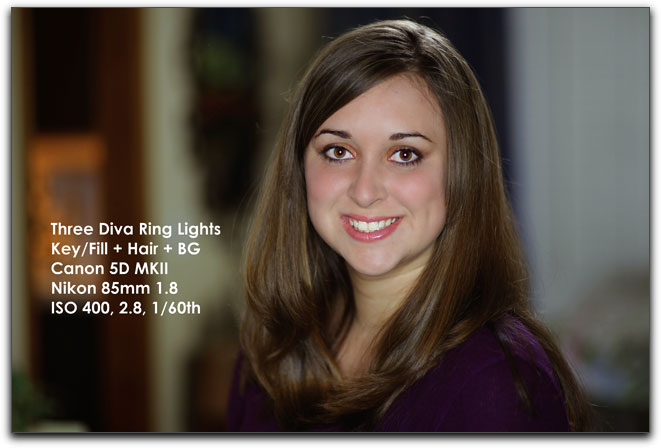
When you consider that most 3-4 light kits sell for between $1,000.00 to $3,000.00, to be able to achieve this level and quality of light for a mere $450.00 is quite impressive. The three light ring light setup provides a clean, high-key look. You should be aware that because the Diva Ring Light is not dimmable, some subjects might find the light around the lens to be quite bright. This "wow, that light is too bright!" effect is commensurate with the amount of ambient light in the room. If you are in a dark room and are lighting solely with a Diva Ring Light, which is a high contrast situation, some talent may feel that the ring light is too bright. I noticed in this setup, once I added the hair light overhead and behind the talent, the apparent brightness of the key light was reduced significantly and even more once I added the third light to the background.
You should always look at your lighting package as a Swiss Army Knife, the more "blades" and "tools" you have, the easier it is to address the needs of a wide variety of jobs and situations. The Stellar Lighting Diva Ring Light offers a look that will appeal to anyone who needs to light subjects to look their best for fashion, beauty or glamour. At U.S. $450.00 for a three light package, the value equation for the Diva Ring Light is impressive. Adding a ring light to your production package is a smart move if you want to create a look that will set you apart from the competition. No matter what style of film or video you shoot, it's nice to have the option of adding some glossy production value so simply and easily. Adding a ring light to your kit at this price is a no-brainer.
Pluses:
Incredible value
Allows users to obtain a look that was expensive or impractical to obtain previously
5400k daylight balanced (no, the 200k difference between 5400k and 5600k is not very significant)
Flexible mounting and positioning options
Lightweight
Flicker free ballast
Very little heat generated
Very little electricity consumed
User replaceable bulb
Minuses:
No dimmer function
Fixture is 18" diameter, kind of large for easy transportation
Construction quality is good but lightweight for professional abuse
No simple method for converting source to 3200k
Dan Brockett is an independent television producer based in Los Angeles, Ca. Dan's most recent project was serving as DP for the 2010 national PBS special "The Legendary Bing Crosby". Dan also writes features and a monthly column for www.hdvideopro.com Reach Dan at dan@biglittlefilms.com.
16 CFR Part 255 Disclosure
DVcreators sent me three Stellar Lighting Diva Ring Lights for review and to report on my findings to other users, this article calls out the advantages and shortcomings of the lights as I see them. I will return the lights to DVcreators, with DVcreators paying for shipment. All hardware, software, and documentation sent to me for the review will be returned to DVcreators.
copyright © Dan Brockett 2010
are either registered trademarks or trademarks of Apple. Other company and product names may be trademarks of their respective owners.
All screen captures, images, and textual references are the property and trademark of their creators/owners/publishers.